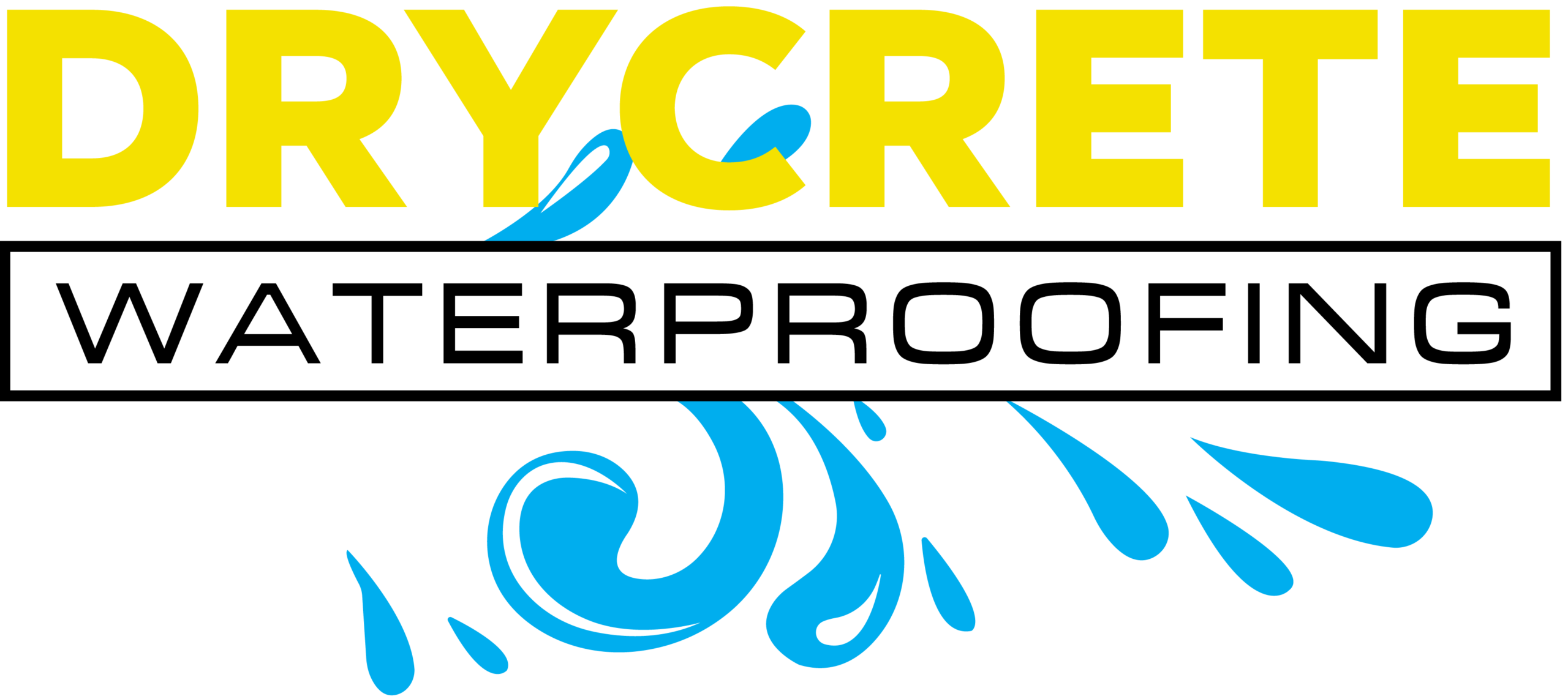At Drycrete Waterproofing we always say, basement waterproofing is not about stopping water, it’s about managing where it goes. Therefore, no basement waterproofing system is complete without the installation of a French drain. This simple system is designed to direct water to where you want it, away from your home.
Let’s be honest, French drains aren’t rocket science. It’s a drainpipe installed in the ground and pitched in the direction you want the water to flow. They can be installed inside your basement or outside your home and may or may not be attached to a sump pump. If installed properly a French drain is as effective as it is simple. Unfortunately, they’re not always installed properly.
This article aims to give you the tools to understand what a quality French drain install looks like, from materials to price to timeline, and to educate you on best use and limitations of interior and exterior French drain systems for basement waterproofing.
What is a French Drain?
Named after Henry French, a 19th century judge and farmer from Massachusetts, French drain systems were originally designed to channel water away from fields and prevent waterlogging on farmland. Known by a variety of other names such as, perimeter drain, drain tile, weeping tile, footing drain, foundation drain, and curtain drain, French drains remain a very simple and effective system. It consists of a trench dug into the ground with a perforated drainpipe surrounded by crushed stone.
The aim of a French drain is to collect and divert excess water from rain, irrigation, groundwater, etc. The water enters the perforated pipe through its holes or slots. Once in the pipe, the water is directed to a designated drainage area such as a drainage ditch, a storm sewer, a swale, or a catch basin.
Where are French Drains for Basement Waterproofing Installed?
Where a French drain is installed will depend on what basement waterproofing issues you are facing and what the source of your water intrusion issues are. French drains can be used to address a variety of water management issues. We’ll break this down into interior French drains and exterior French drains.
Interior French Drain:
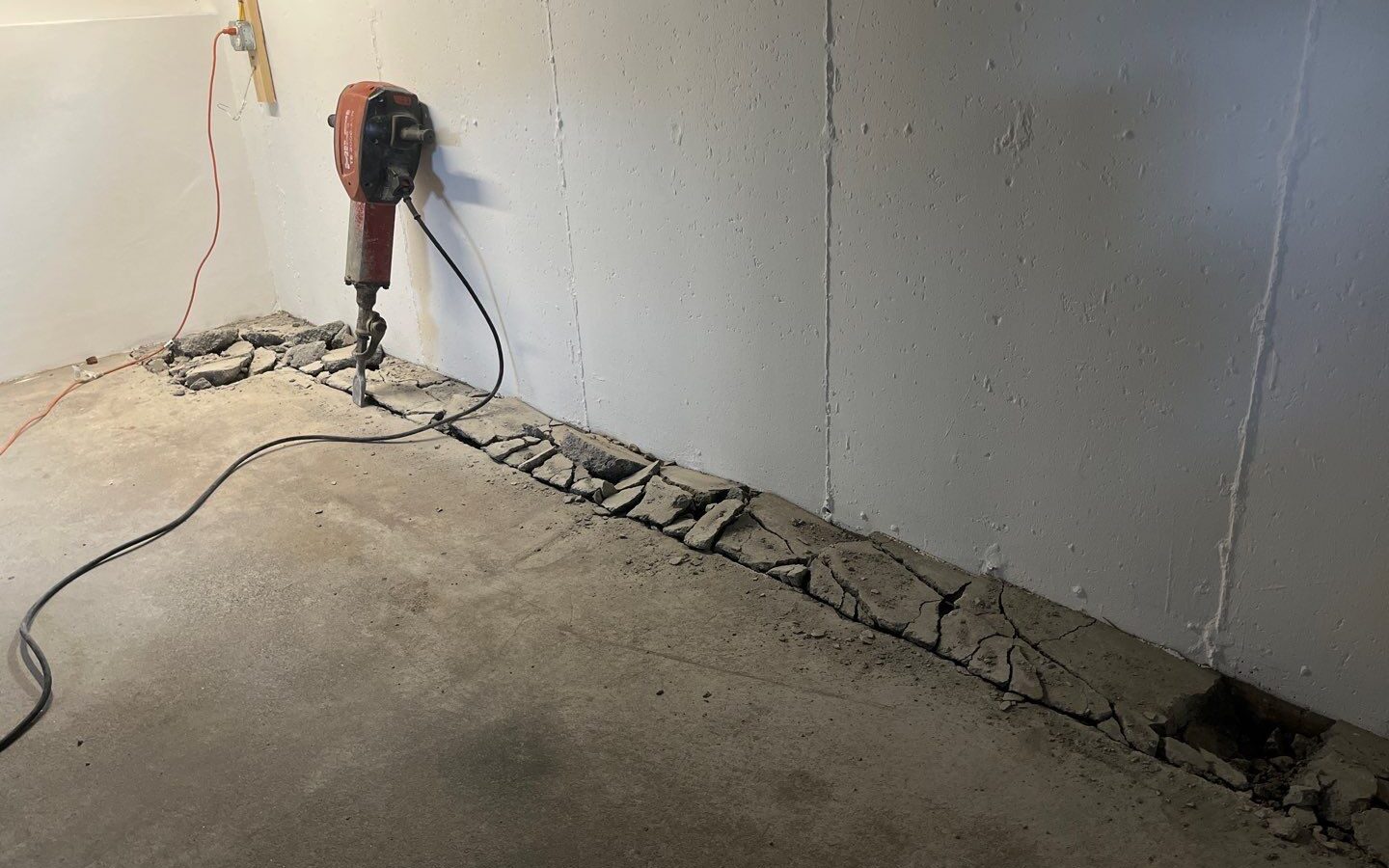
An interior French drain is installed along the internal perimeter or your basement or crawlspace and requires a sump pump to complete the system. Drainpipes can be installed as a partial system, meaning along a particular section of your basement, or as a full system, meaning around your entire basement.
Exterior French Drain:
There is much more variety in the placement of an exterior French drain. This will depend on the unique details of your property and the goal of the French drain system. Some common locations include:
- Along the exterior perimeter of the foundation: This helps to redirect water away from the foundation and prevents it from seeping into the basement or crawl space.
- Downslope Areas: If a property is situated on a slope or incline, French drains can be installed uphill from the building to intercept and redirect water that flows downhill.
- Driveways and Patios: In areas where water tends to pool on driveways, patios, or walkways, installing French drains can help prevent water accumulation and improve drainage.
- Around Access Points: Exterior French drains can be installed around basement windows, window wells, or stairwell entrances to prevent water from entering these openings.
Now you might be asking yourself, isn’t this article about basement waterproofing? Why would I need a French drain in my driveway to keep my basement dry. The answer is simple, you want to have systems in place to minimize excess water anywhere near your foundation. If the pitch of your driveway causes water to pool near your home that can cause issues in your basement.
A thorough understanding of the water management issues on your property will help you decide the proper placement of your exterior French drain for basement waterproofing. When in doubt, contact a professional waterproofing company or landscape contractor to help you assess the situation.
How do French Drains Work?
As we established earlier, French drains aren’t rocket science but understanding how they work will help you properly install your own French drain or assess the quality of a professional install. There are several factors that lead to a properly installed French drain system. Let’s explore each and how they work together to keep your basement dry.
The Trench:
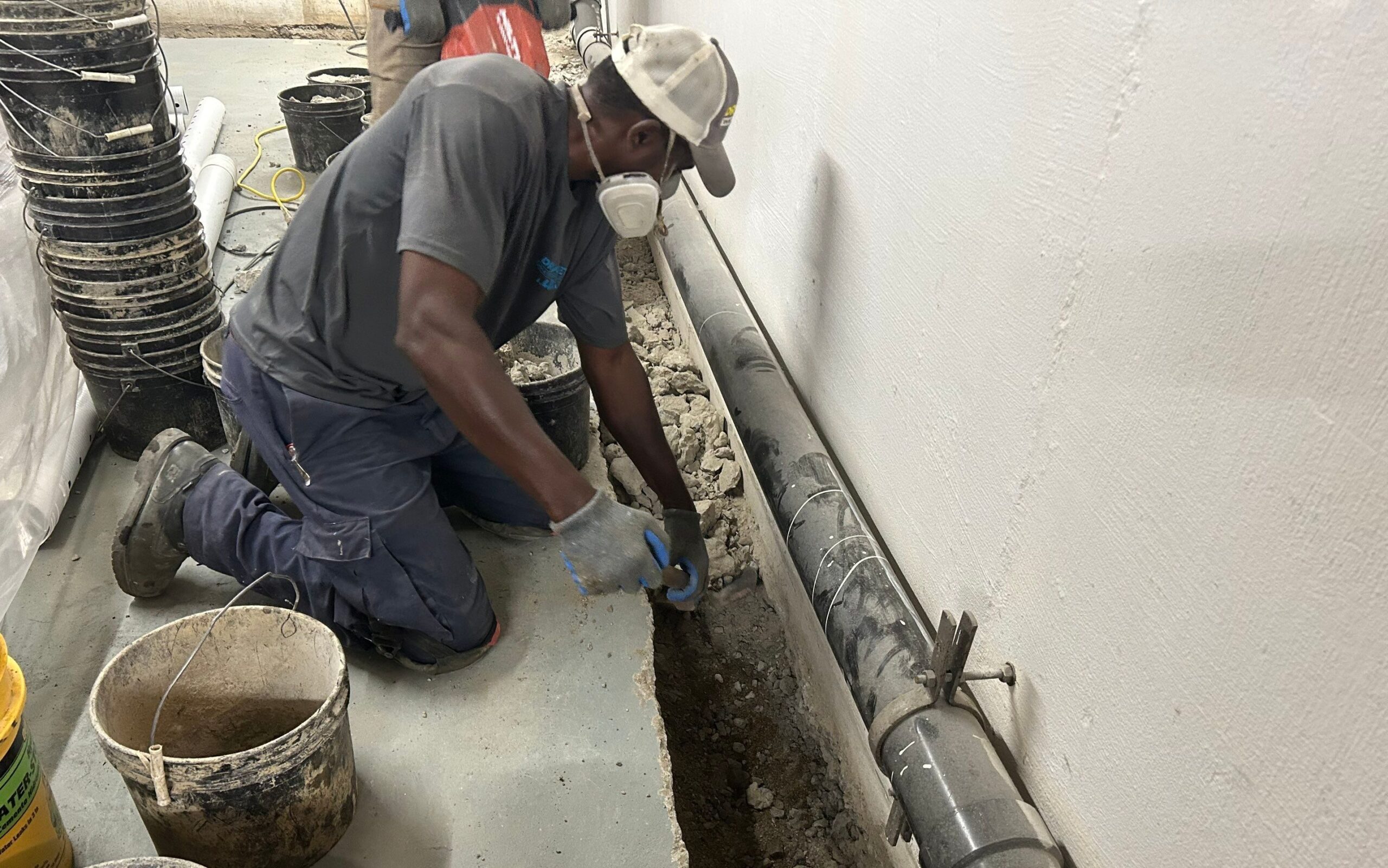
The first step in a French drain install is digging the trench. We’ve already learned the common areas that a trench may be dug. Let’s talk about what makes a good trench.
A trench should be dug deep enough and wide enough to handle the capacity of the water that your system will experience. Your trench, which acts as a catch basin for additional water, can greatly increase the capacity of your French drain system if appropriately sized. We typically dig interior trenches 12 to 15 inches deep and 12 inches wide. Exterior trenches should be closer to 18 inches deep and 12 inches wide to account for the frost line during colder seasons.
When digging your trench, you should keep in mind what will go over top. When we install an interior French drain, we top the trench with 2 to 3 inches of new concrete. That additional space must be accounted for when digging.
When filling in the trench you should use filter fabric and crushed stone or some other type of geo filter around your drainpipe to prevent excess sediment from clogging the system. The crushed stone also provides excellent drainage and allows water to easily flow into your pipe.
The Pipe

You’ll sometimes see French drains installed using a variety of subpar drainpipe materials such as corrugated pipe or rectangular shaped drainpipes. The quality of your drainpipe directly relates to the effectiveness and longevity of your system. At Drycrete we use 4-inch round perforated hard drainpipe.
The hard pipe, as opposed to corrugated pipe, is studier and less prone to clogging. 10 to 12 inches of material is being piled on top of the pipe, and although the corrugated pipe allows for adjustability it’s a not a durable material. Its flexibility also makes properly pitching the pipe difficult, and the ribbed corrugation creates problem areas for sediment build up.
The reason we use a round drainpipe, as opposed to a rectangular design, is because it’s easier to keep the proper pitch throughout the system. When going around corners the round pipe allows the fitting to be rotated to maintain the correct pitch. A rectangular design makes this harder to accomplish. Look at any pipe in your home that carries water. You’ll notice that they’re all round, that’s by design.
The Pitch

Proper pitch is the most important part of the system. The lowest point in your French drain should be the outlet, or the area your water should be draining to. Keeping your pipe pitched, or sloped, in the direction of the outlet ensures water is never stationary in your pipe. This is the point of a French drain system and prevents oversaturation of one area. Proper pitch also helps prevent freezing drainpipes in colder climates because running water is less likely to freeze.
If the area where you plan to install your drain has a natural pitch, that’s great, but if you’re installing your drain in a relatively flat area then you’ll need to account for 1 inch of slope every 10 feet. Using a hard pipe during installation makes this process easy. At Drycrete we install French drainpipes in 10-foot lengths ensuring each length of pipe is pitched toward the outlet. Your French drain should let gravity do the work.
The Outlet

The outlet for your French drain will be different depending on where you are intending to direct your water, but the concept remains the same. It’s the lowest area in your French drain system and where you want water to collect.
For interior French drains you need a sump pump to complete the system, so your output will be your sump pit or sump basin. Water should collect in your sump pit, and as the water rises, should trigger your sump pump to turn on and pump water out of your basement. This water is then directed via discharge line away from your home’s foundation.
For exterior French drains there are a variety of options to choose from when designating an outlet, however, there are a few factors you should consider:
- Lowest Elevation: The outlet point should be at the lowest elevation possible while still ensuring that the water flows away from the building and property. This helps ensure proper drainage without causing water to pool near the outlet.
- Away from Structures: The water discharged from the French drain should be directed away from any structures, including buildings, walls, and foundations, to prevent potential water damage or erosion.
- Natural Drainage Paths: Choose an outlet point that aligns with the natural flow of water on your property. This could be toward a natural watercourse, a designated stormwater drain, a drainage ditch, or a suitable drainage area.
- Local Regulations: Check with local building codes and regulations to ensure that your chosen outlet location complies with any relevant guidelines.
- Neighboring Properties: Ensure that the water discharged from the French drain does not negatively impact neighboring properties. Considerations like property boundaries and drainage easements might come into play.
- Environmental Impact: Choose an outlet location that minimizes the environmental impact. Avoid directing water into sensitive areas like wetlands, streams, or water bodies without proper permissions.
- Vegetation and Landscaping: Consider the effect of water flow on your landscaping and vegetation. Avoid discharging water in a way that could damage plants or create erosion.
- Functional Accessibility: The outlet point should be accessible for maintenance and cleaning as needed.
To Sum it Up:
Excess water that is pooling near your foundation or under your slab enters the trench and is filtered through filter fabric and geo filter material such as crushed stone. The water inevitably enters your perforated drainpipe which is pitched towards your outlet. Gravity does the work of moving that water towards your outlet, which in interior systems is a sump pit, and in exterior systems is the best designated drainage area. Your basement stays dry as a bone.
How Do You Know if You Need a French Drain for Basement Waterproofing?
Now you know all about French drains and how they work, but how do you determine if a French drain is the right basement waterproofing solution for you? There are a few warning signs that you can look for that will indicate the need for a French drain. We’ll again break this down into interior and exterior systems.
Interior French Drain:
The point of an interior French drain is to redirect water that is pushing up through cracks and seams in your basement floor. To understand why you would need an interior French drain it’s important to understand why this happens. As water accumulates under your slab it has no way to drain or percolate. Hydrostatic pressure builds and water is pushed up through the path of least resistance, which is cracks and seams in your floor.
An interior French drain acts as a pressure relief valve for hydrostatic pressure. The trench gives the water a place to accumulate, and the pipe gives it a path of least resistance. Water will still rise under your slab but instead of pushing up through your floor it will travel along the drainpipe and into your sump pit where your sump pump will remove the water from your home.
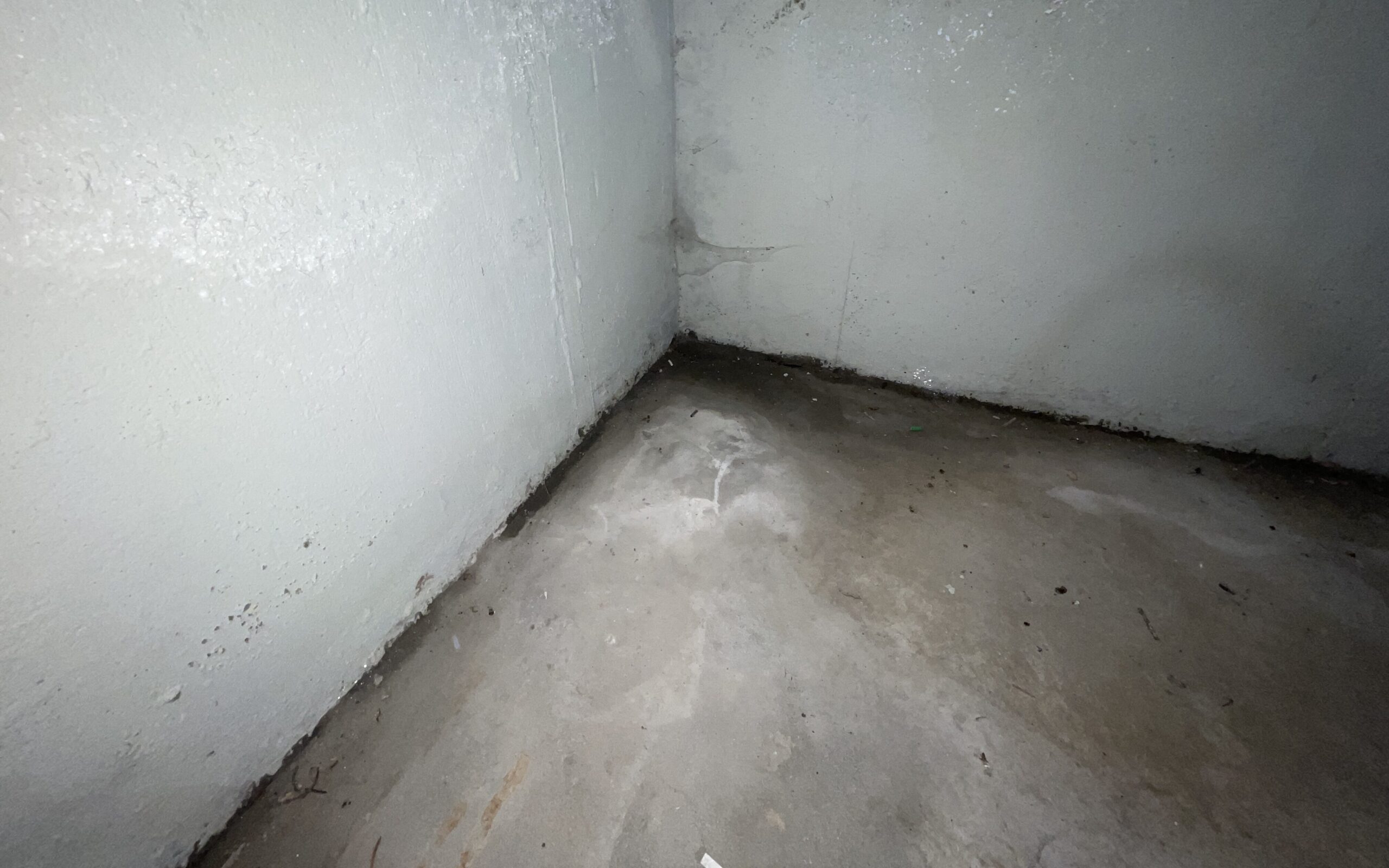
Some warning signs to look for:
- Recurring basement flooding
- Visible stains around cracks and seems of floor
- Active water leaking through cracks
- Sump pump overload
- Efflorescence on floor
Exterior French Drain:
The aim of an exterior French drain is the same as an interior system, to redirect water away from your home. How it works, however, is slightly different. The main purpose of an exterior French drain is to intercept groundwater and surface water before it reaches the foundation, effectively preventing water from saturating the soil around the foundation walls.
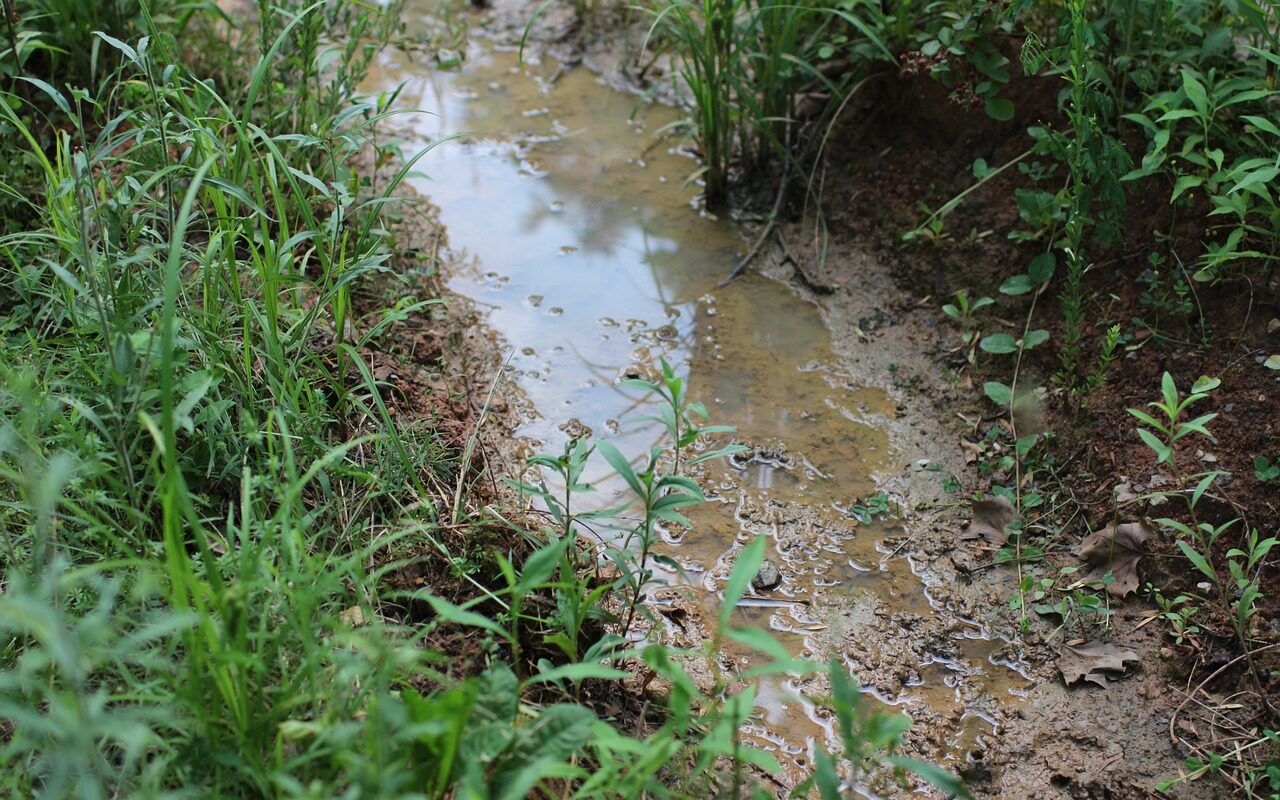
Some warning signs to look for:
- Persistent moisture around foundation
- Pooling water
- Water stains on the exterior of foundation walls
- Erosion and settling of soil around foundation
- Rotting wood siding, trim or other wooden elements
- Soggy lawn or landscaping
- Cracks in walkways, driveways, or other hardscapes
Best Case Uses of French Drains:
French drains are versatile drainage systems that can be used in a variety of situations to effectively manage water and prevent moisture-related issues. Here are some best-case uses of French drains for basement waterproofing:
- As part of a complete basement waterproofing system
- To increase effectiveness of your sump pump
- Insurance/protection for a finished basement
- Addressing poor drainage in yard
- Redirecting water flowing down hill towards your foundation
- Protecting your foundation from excess moisture
- Relieving hydrostatic pressure under your floor
French Drain Limitations:
Although are an excellent basement waterproofing system that can help keep your basement dry there are some considerations and limitation to keep in mind when considering an install.
- Maintenance Requirements: French drains require ongoing maintenance to prevent clogs and ensure proper functioning. If maintenance is neglected, debris and sediment can accumulate in the drainage system, leading to reduced efficiency and potential backups.
- Clogging and Blockages: While filter fabric is often used to prevent soil and debris from entering the drain, over time, fine particles can still accumulate and potentially clog the system. This can lead to reduced drainage capacity and the need for regular cleaning.
- Sump Pump Reliability: If your French drain system relies on a sump pump to remove collected water, the pump must be regularly maintained and have a backup power source to ensure it functions during power outages.
- Inadequate Slope: The success of a French drain relies on proper slope for water flow. If the drain isn’t installed with the correct slope, water might not flow efficiently, potentially leading to stagnant areas.
- Radon Concerns: Installing an interior French drain could potentially disturb radon entry points and increase radon levels in your home. It’s important to address radon concerns if your area is prone to elevated levels.
- Slope Grading Issues: If your property’s grading isn’t properly directed away from the foundation, water might still accumulate against the basement walls despite the presence of a French drain.
In conclusion:
French drains offer a simple yet effective solution for basement waterproofing by redirecting water from foundations or relieving pressure under slabs. Knowing installation best practices, best uses, and limitations is key. Whether for DIY or professional evaluation, understanding French drains empowers informed decisions. Consult experts like Drycrete Waterproofing for a free on-site assessment to determine if a French drain suits your needs.
